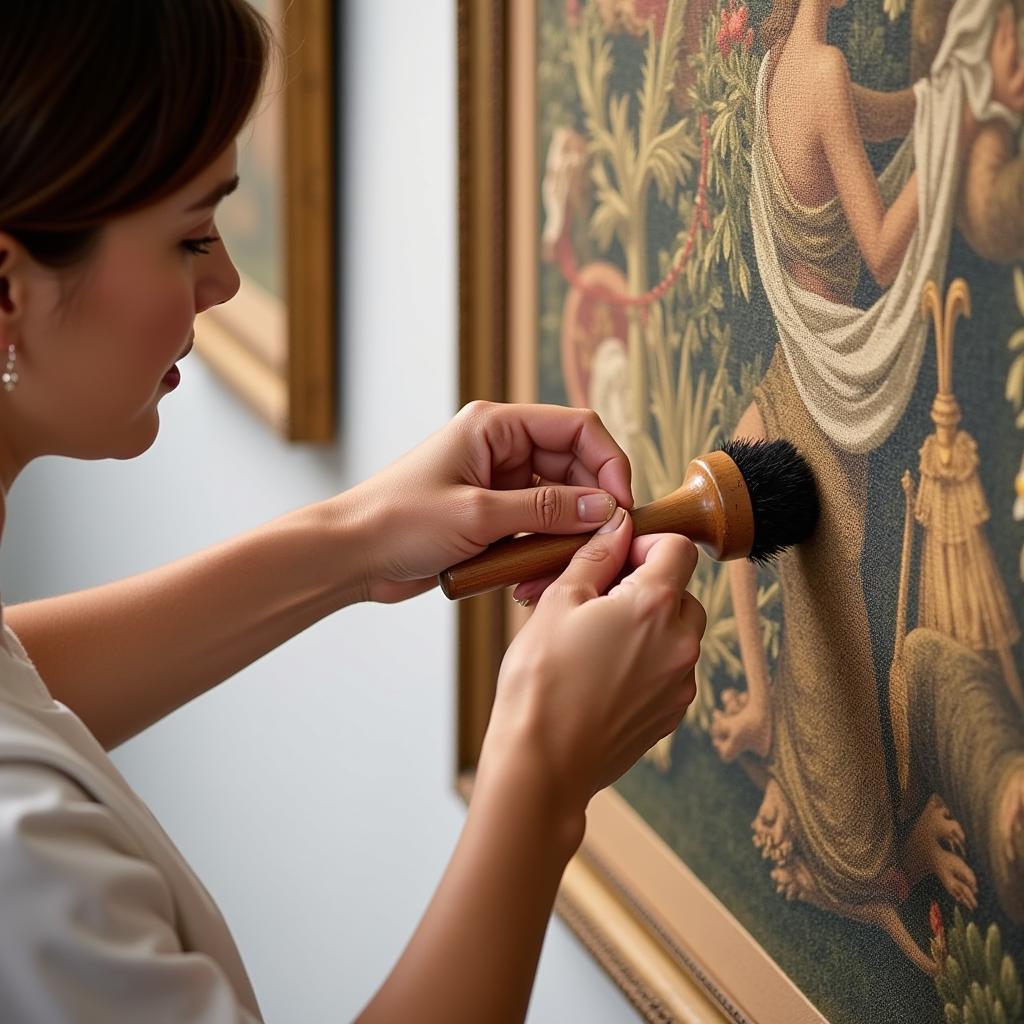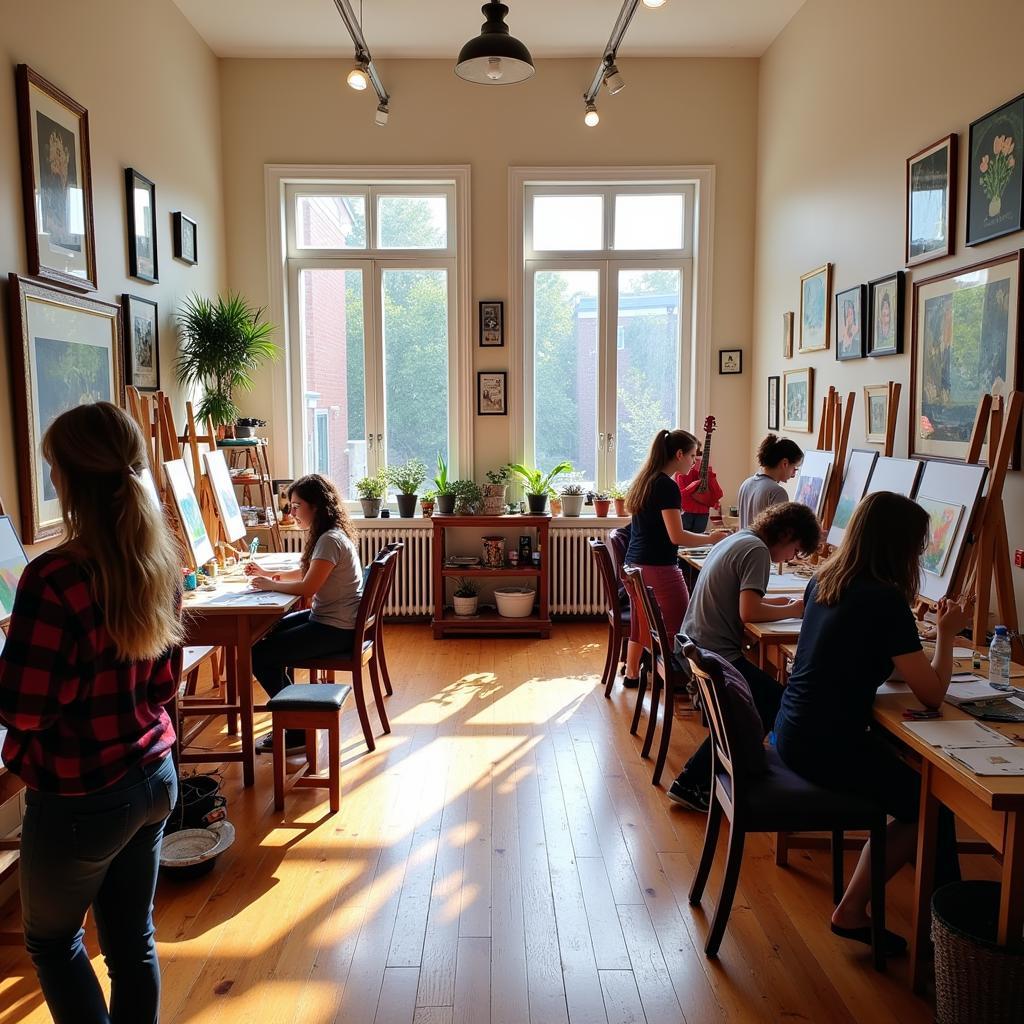Exploring the World of Art Tapestries
Art Tapestries have captivated and adorned spaces for centuries, evolving from functional textiles to intricate works of art. From ancient weaving traditions to modern digital creations, these woven wonders offer a unique blend of history, craftsmanship, and artistic expression. This article delves into the fascinating world of art tapestries, exploring their history, diverse styles, and the enduring appeal they hold in contemporary interiors. We’ll also look at how to choose and care for these stunning pieces, ensuring they remain a cherished part of your decor for years to come.
Art tapestries offer a timeless elegance, adding a touch of history and artistry to any space. Whether you’re drawn to traditional designs or contemporary interpretations, the rich textures and vibrant colors of these woven masterpieces create a visual feast for the eyes. Beyond their aesthetic value, tapestries also offer practical benefits, acting as insulation against drafts and absorbing sound. From the grandeur of historical depictions to the abstract beauty of modern designs, art tapestries provide a captivating window into the world of textile art. Explore the options and discover the perfect piece to enhance your space.
The Art of the Loom allows artists to achieve intricate patterns and impressive scale. This transformative process adds a new dimension to their original artwork.
A Brief History of Art Tapestries
Tapestry weaving has a rich history, dating back to ancient civilizations. Originally serving utilitarian purposes, such as providing warmth and protection, tapestries quickly became a medium for artistic expression. During the Middle Ages, European tapestry workshops flourished, producing magnificent works that depicted historical events, mythological scenes, and religious narratives. These tapestries, often large and elaborate, became symbols of wealth and status, adorning the walls of castles and palaces.
The Renaissance and Beyond
The Renaissance saw a further flourishing of tapestry art, with artists like Raphael creating iconic designs that were then woven into intricate masterpieces. The art form continued to evolve through the centuries, adapting to changing artistic styles and technological advancements. Today, art tapestries continue to be created by both traditional artisans and contemporary artists, ensuring the legacy of this ancient craft lives on.
Choosing the Right Art Tapestry
Choosing the right art tapestry can transform your space. Before buying an art tapestry, consider your existing decor and style. Do you prefer traditional patterns or more contemporary designs? Consider the size of the tapestry and where you intend to hang it. A large tapestry can serve as a focal point in a living room, while smaller tapestries can add a touch of elegance to a bedroom or hallway. The color palette of the tapestry should also complement your existing furnishings and wall colors.
Caring for Your Art Tapestry
Proper care ensures your art tapestry will remain a cherished piece for generations. Dusting your tapestry regularly with a soft brush or vacuum cleaner attachment will help prevent the buildup of dirt and debris. If your tapestry becomes stained, it’s best to consult a professional cleaner who specializes in textile conservation. Avoid hanging tapestries in direct sunlight, as this can cause the colors to fade over time. You can also choose an assassin’s creed wall art for your bedroom. Proper storage is equally important, so consider rolling your tapestry around a sturdy tube and storing it in a cool, dry place.
 A person carefully cleans an art tapestry with a soft brush, demonstrating proper care and maintenance techniques.
A person carefully cleans an art tapestry with a soft brush, demonstrating proper care and maintenance techniques.
Different Types of Art Tapestries
Woven Tapestries
Traditional woven tapestries are created on a loom, using intricate techniques that have been passed down through generations. These tapestries are known for their durability and rich textures, making them a valuable addition to any art collection.
Jacquard Tapestries
Jacquard tapestries are woven on a special loom that allows for more complex and detailed designs. This technique, invented in the early 19th century, revolutionized tapestry weaving and opened up new possibilities for artistic expression.
Printed Tapestries
Printed tapestries offer a more affordable option for those who appreciate the look and feel of a tapestry but may not have the budget for a handwoven piece. While not as durable as woven tapestries, printed versions can still add a touch of artistry to any space. Large wall art for entryway make an impressive welcome to any visitor.
Frequently Asked Questions about Art Tapestries
- What is the difference between a tapestry and a rug? While both are textiles, tapestries are designed to be hung on the wall, whereas rugs are intended for the floor.
- How do I clean my art tapestry? Regular dusting is recommended. For stains, consult a professional textile cleaner.
- What are the different types of tapestry weaving techniques? Common techniques include tapestry weaving, jacquard weaving, and kilim weaving.
- Where can I buy art tapestries? Art tapestries can be purchased from art galleries, antique shops, and online retailers.
- What is the average cost of an art tapestry? The cost of an art tapestry can vary greatly depending on its size, age, and craftsmanship.
- Can I hang a tapestry outdoors? It’s not recommended to hang tapestries outdoors, as exposure to the elements can damage the fibers.
- How do I store my art tapestry? Roll the tapestry around a sturdy tube and store it in a cool, dry place.
Conclusion
Art tapestries are more than just decorative wall hangings; they are pieces of art that tell stories, evoke emotions, and add a touch of history and elegance to any space. Whether you choose a traditional woven tapestry or a contemporary printed version, art tapestries offer a unique way to express your personal style and enhance your home decor. From the art of the loom to contemporary designs, art tapestries continue to weave their magic into our lives. Consider adding a ginkgo leaves wall art piece to your collection for a touch of nature’s elegance. Or maybe a beautiful mandala art for wall to bring some calming vibes into your home.
Other questions we receive
- What are some unique tapestry designs?
- How can I incorporate tapestries into a modern home decor?
- What is the history of tapestry art in different cultures?
For any assistance, please contact us at Phone Number: 02462573573, Email: danteum@gmail.com Or visit us at: Savico Megamall, 7-9 Đ. Nguyễn Văn Linh, Gia Thụy, Long Biên, Hà Nội 10000, Việt Nam. We have a 24/7 customer support team.



